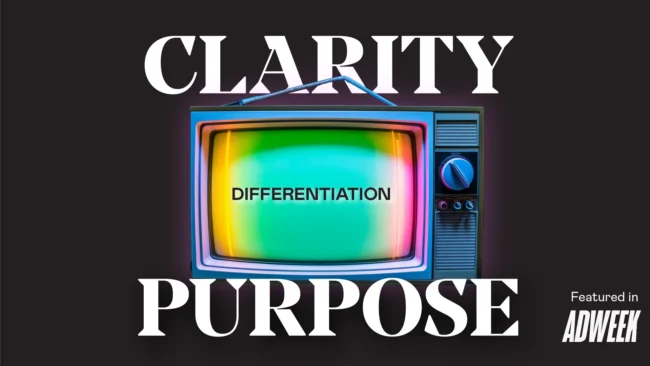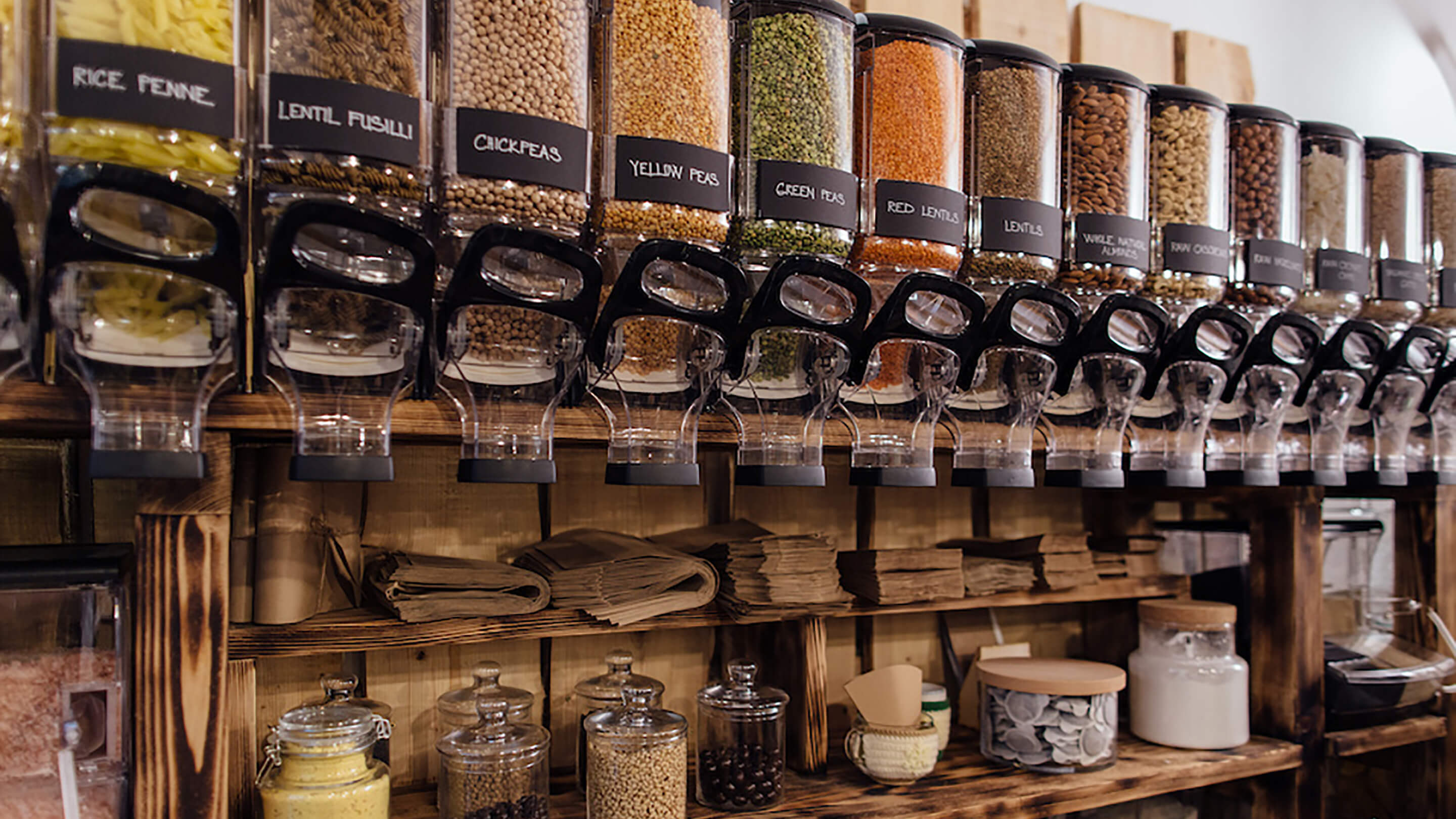
Supermarkets were finally tackling their plastic waste problem before Covid stymied progress. Are they – and, crucially, shoppers – ready yet to embrace reusable packaging again?
Branding and packaging experts, including our Managing Partner, Jen Ives, weigh in on this question and what it means for brands.
Our supermarkets have a lot to answer for when it comes to the amount of plastic waste they generate. In the UK, the sector used nearly 900,000 tonnes of plastic packaging in 2019, according to research by Greenpeace.
Some consumers, horrified by the findings, took matters into their own hands, leaving plastic wrapping from fruit and veg at the tills in protest. Facing a public backlash about the overpackaging mountain, the industry realised that it had to act. Both retailers and producers started working out how to get smarter with their packaging.
There were trials aplenty. Waitrose started an 11-week pilot in its Oxford supermarket that reduced single-use packaging by 98% and plastic packaging overall by 83%. The Waitrose Unpacked scheme, which installed the kinds of dispensers seen at zero – waste stores across the country, was rolled out to several other stores.
At its store in Ulverston, Cumbria, Aldi moved some products, including rice and pasta, into dispensers designed for customers to bring their own containers. This was part of a project that could, the company hopes, reduce its plastic consumption by 130 tonnes a year.
Morrisons tested a similar scheme for some frozen fruit, pasta and seeds, offering them for sale at a 10% discount to incentivise customers to choose the greener packaging option. The company’s overall goal is to cut its plastic consumption in half by 2025.
And Asda’s Middleton supermarket in Greater Manchester became a beacon for eco-conscious shoppers, offering refills on products in a scheme that’s set to expand to more stores in the coming months.
It all showed great promise. The world of packaging looked to be moving in the right direction, but then the pandemic shook consumer confidence in food safety. For instance, 55% of Canadian consumers polled for research published in April 2021 said that they had be – come more worried about the issue since the start of the Covid crisis.
“A lot of the innovation that had been happening before last year went on the back burner,” says Simon Geale, executive vice-president, procurement, at Proxima, a consultancy that works with a number of big UK retailers. “Businesses reverted to ‘anything will do’.”
Particularly during the period of panic buying at the beginning of the pandemic, supermarket chains prioritised getting enough stock on their shelves, rather than thinking about the most sustainable packaging solutions for it. They also struggled with a cardboard shortage in mid-2020, exacerbated by the un – precedented growth in demand for their online delivery services. This affected their ability to safely trans – port certain products to their stores, never mind to customers.
Eggs that used to be packed in cardboard were stocked in plastic boxes, for instance, while bakery items that had been displayed loose before the pandemic struck ended up in plastic packaging at Budgens. And the roll-out of refill stations in some supermarkets was postponed amid concerns about the transmission risk they would present.
Indeed, as public unease about the spread of Covid-19 via contact with surfaces grew, the whole concept of reuse became less popular. Research published in the International Journal of Consumer Studies in April 2021 revealed that public support for a ban on all single-use plastics in food packaging plunged from 72% in 2019 to 58% in 2020.
In response to consumer demand, manufacturers reverted to producing overpackaged goods in an effort to make them appear more sanitary. The hermetically sealed pack – age is terrible for the environment, but it’s a godsend for those worried about contracting viruses through contact with dispensers.
With the benefit of more than a year’s worth of data, we now know that Covid is far more likely to be transmitted aerially. Public health bodies including the World Health Organization and the US Food and Drug Administration have ex – plained the risks posed by so-called hygiene theatre and exploded the myths that pervaded during the early stages of the pandemic, which had led some retailers and shoppers to resort to unnecessary practices such as double-bagging.
“There were so many grey areas in the information we were given at the start of the pandemic,” says Charlotte Bowyer, co-founder of the Zero Waste Company, a shop in Tunbridge Wells, Kent. She felt obliged to stop customers bringing their own containers – a difficult decision when your whole ethos is to reduce waste in as many ways as possible. As a compromise, she offered them recycled paper bags.
Getting customers to return to a frame of mind in which most are happy to reuse containers again is likely to be a challenge, says Jen Ives, managing partner at Coley Porter Bell, a packaging design agency with clients including M&S, Tesco, Müller and Fox’s Biscuits.
“This has become a top priority for brands. The conversations we’re having with them are about how to build trust and emotional connections with consumers,” says Ives, who believes that big brands have a responsibility to communicate clearly and dispel myths that have built up about viral transmission through contact with surfaces.
“If they (brands) can understand what the sensory codes are that cue ideas of cleanliness and safety, and tap into those through sounds, smells and visuals, they can start to build a more immersive brand expression”
“That would reinforce on an implicit level the strategy and messaging they have about safety, cleanliness and sustainability.”
Bowyer says that the pandemic has caused “massive setbacks” for the zero-waste movement, “especially with the shift to online shop – ping. You cannot do that without waste, no matter how hard you try.”
Her company tested the water by providing a delivery service during the first UK lockdown, but found it hard to stay true to its ethos of limiting waste while also ensuring that items arrived safely at customers’ homes. Despite such problems, Bowyer is confident that the Covid crisis has reaffirmed consumers’ attitudes towards inefficiency.
“People saw the environmental impact of the world going into lock – down and the aftermath of all the excess packaging and single-use masks,” she says. “A lot of them are coming to us and saying: ‘We need to make a difference with our waste and plastic output.’”
Yet Bowyer believes that zero – waste shopping is not the future. That may seem an unusual thing for her to say, but she readily admits that “zero-waste shopping is hard – and people like convenience”.
Instead, she hopes that consumers will occupy a more sustainable middle ground where there is room for more environmentally friendly or compostable packaging, while businesses such as hers will help to propel the conversation in a more eco-friendly direction.
Ives wholeheartedly agrees with her. “Coming out of this pandemic, we are all still feeling our way,” she says. “But there is definitely a responsibility – and an opportunity – for brands here.”

